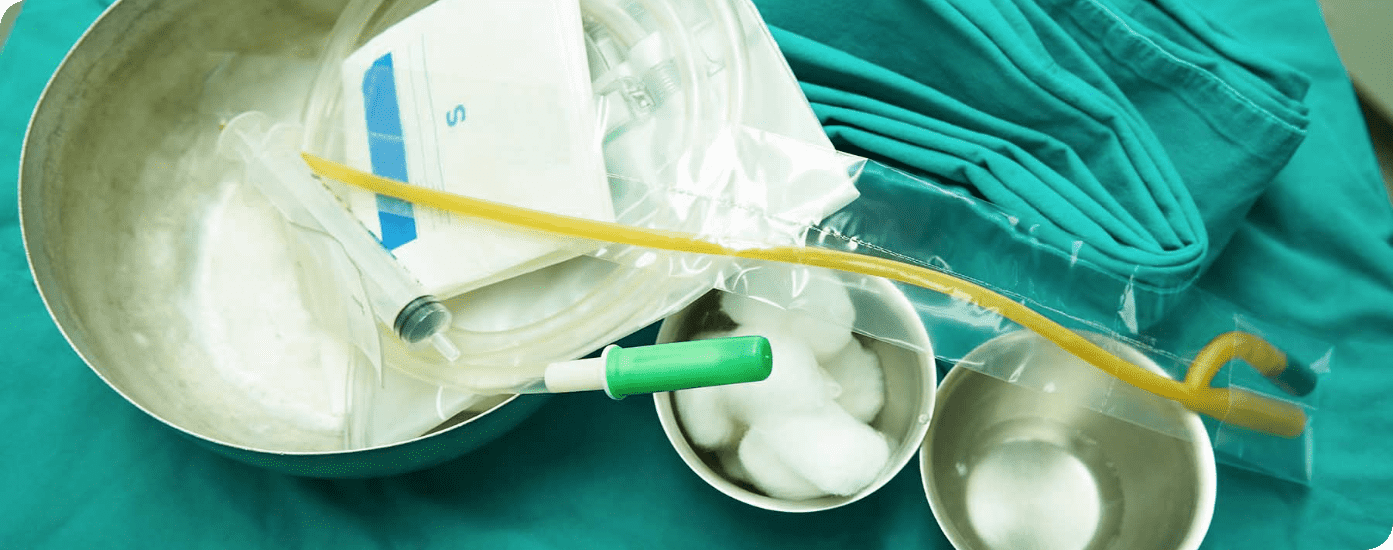Urinary Catheter Management in Adelaide

What is a urinary catheter?
Urinary catheter management by Friendly & Graceful Care Services. A urinary catheter is a thin, hollow, and flexible tube inserted into your bladder to drain the urine, and the process of doing so is referred to as urinary catheterisation. The urinary catheter, typically made of silicone, serves as an instrument for removing urine from the bladder. The tube may cause you to be uneasy or uncomfortable. Still, the good thing is that it keeps your bladder dry and away from other health concerns that may worsen your condition.
Urinary catheterisation is one of the ways to lessen the risk of infection and avoid damage to the kidney, especially when one cannot urinate on their own. Classified as an invasive procedure, only nurses and doctors should be the ones to conduct urinary catheterisation. In addition, this complex procedure entails a safe and careful insertion of the catheter into the bladder to serve its intended purpose.
There are different types of urinary catheters, but the two main types are indwelling and intermittent. The primary differences between the two are the frequency of removing or changing the catheter and its processes. The indwelling catheter is inserted into the bladder, left in place, and regularly changed by a nurse as required. On the other hand, the intermittent catheter is inserted and immediately removed whenever you need to drain urine; the process is called clean intermittent self-catheterisation, and it ensures the draining of the bladder at regular intervals.

What conditions need a urinary catheter?
A urinary catheter is a thin, hollow, and flexible tube inserted into your bladder to drain the urine, and the process of doing so is referred to as urinary catheterisation. The urinary catheter, typically made of silicone, serves as an instrument for removing urine from the bladder. The tube may cause you to be uneasy or uncomfortable. Still, the good thing is that it keeps your bladder dry and away from other health concerns that may worsen your condition.
Urinary catheterisation is one of the ways to lessen the risk of infection and avoid damage to the kidney, especially when one cannot urinate on their own. Classified as an invasive procedure, only nurses and doctors should be the ones to conduct urinary catheterisation. In addition, this complex procedure entails a safe and careful insertion of the catheter into the bladder to serve its intended purpose.
There are different types of urinary catheters, but the two main types are indwelling and intermittent. The primary differences between the two are the frequency of removing or changing the catheter and its processes. The indwelling catheter is inserted into the bladder, left in place, and regularly changed by a nurse as required. On the other hand, the intermittent catheter is inserted and immediately removed whenever you need to drain urine; the process is called clean intermittent self-catheterisation, and it ensures the draining of the bladder at regular intervals.
How is a urinary catheter managed?
If you are required to undergo urinary catheterisation and do not want to stay in the hospital, you don’t have to worry much because you will be allowed to leave. The only condition is that you will be required to come back whenever it’s time to change the catheter, especially if you have the indwelling type that a nurse or a skilled medical professional can only change. Meanwhile, if you have an intermittent catheter that requires you to drain urine at regular intervals, you may consider applying for a care support service that allows you to have a qualified staff who can assist you in changing the catheter, particularly when you are uncomfortable doing it on your own.
It is advised that the task of managing patients’ urinary catheters shall be left solely to healthcare professionals or trained staff with a background in providing medical assistance. Proper hygiene must be the priority in urinary catheter management since the procedure itself already exposes the patient to possible infection. Likewise, a correct way of draining urine must also be observed to avoid damage or leaks in the equipment and reduce the risk of infection and contamination.

NDIS coverage and benefits
The National Disability Insurance Scheme (NDIS) funds various support services, including Urinary Catheter Management in Adelaide. If eligible for the NDIS funds, you may enjoy the perks of receiving assistance from staff trained following the NDIS Practice Standards to ensure high-quality service in the comfort of your homes.
If you are an existing participant of the NDIS and want to know more about incorporating Urinary Catheter Management services into your care plan, you may contact us.
What FGCS can do for you?
Here at FGCS, we can help you by having our trained professionals manage your urinary catheter in the most careful way possible. We guarantee that our team can address your care support needs and provide you with the relevant and appropriate treatment. All staff of FGCS are more than willing to guide you in every step of your recovery.
Contact us for more information on Urinary Catheter Management in Adelaide and other services we can offer.





